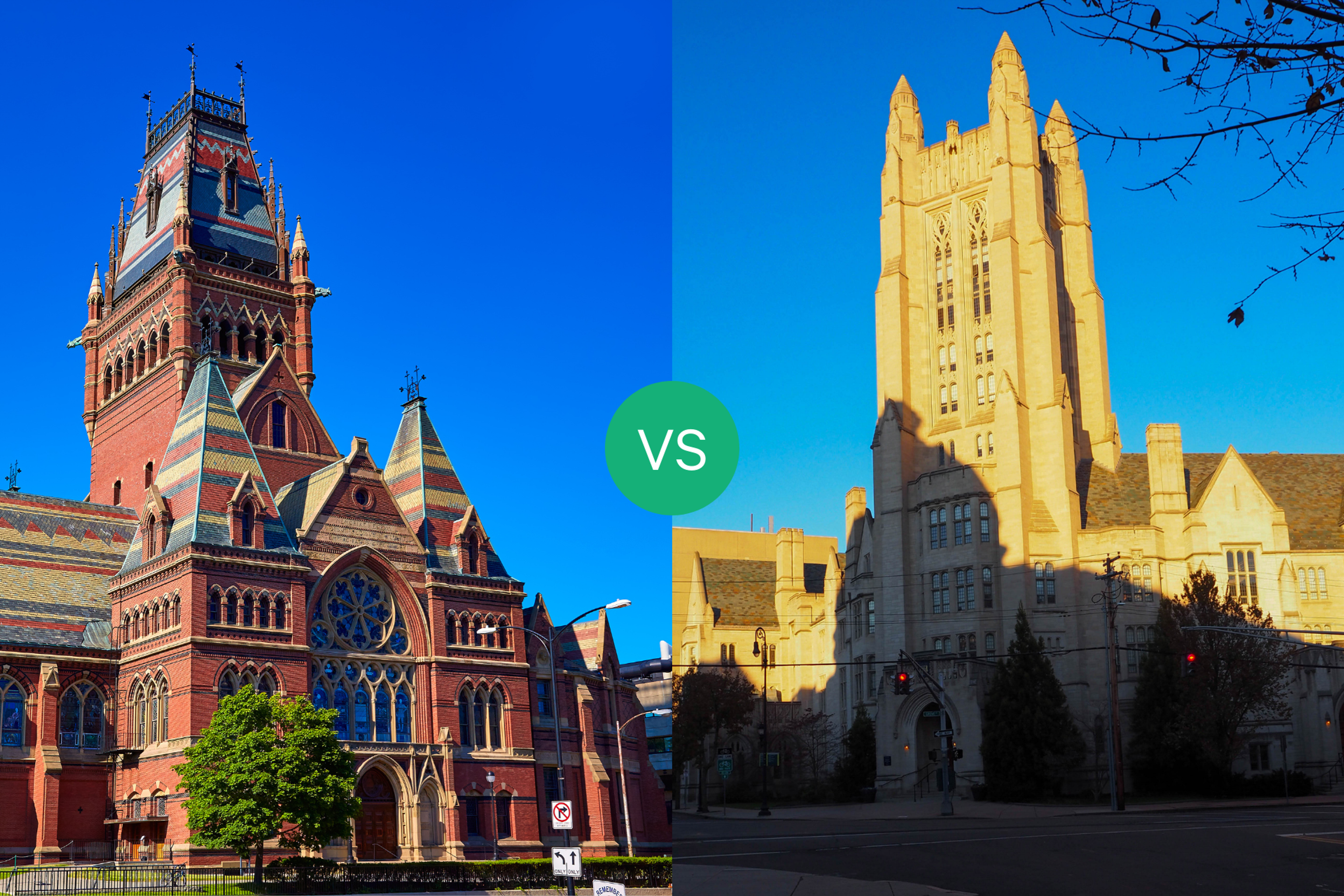Analyzing the Law School Rankings: 2022 Vs 2023
Discover the key differences between the 2022 and 2023 law school rankings in this insightful article.
Posted March 6, 2025

Table of Contents
For many law students, ranking is an essential factor when choosing which law school to attend. These institutions are ranked based on various criteria, including the quality of education, the research output of the faculty, and the employment prospects of graduates. In recent years, the law school rankings have undergone significant changes, with institutions competing to secure a higher position on the list. In this article, we'll be analyzing the law school rankings for 2022 and 2023, examining the changes made, and predicting the direction this trend will take in the future.
The Methodology Behind Law School Rankings
Law school rankings are conducted by various publications and organizations, each with their own unique methodology. However, some of the critical factors that contribute to the ranking include academic reputation, scholarly excellence, student selectivity, faculty resources, and graduate success.
For instance, the U.S. News & World Report Law School Rankings, which are widely regarded as the most influential, uses a complex algorithm that considers admission selectivity, placement success, and faculty quality. Other publications, such as the National Law Journal and the Times Higher Education, have different criteria, and as a result, their rankings can vary significantly.
It is important to note that law school rankings should not be the sole factor in deciding which law school to attend. While rankings can provide valuable information, they do not necessarily reflect the individual needs and preferences of each student. It is essential to consider factors such as location, cost, areas of specialization, and extracurricular opportunities when making a decision about law school.
Changes in the Ranking Criteria from 2022 to 2023
In the last year, several changes have been made to the methodology used to rank law schools, which has impacted the overall ranking results. One of the significant changes is the emphasis on employment success, with more weight given to post-graduation job outcomes, including salary, bar passage rates, and employment at prestigious law firms.
Other changes include the addition of new factors, such as student satisfaction, diversity, and inclusion, to the ranking criteria. These changes reflect the growing importance of these issues in the legal profession and society, and the need for law schools to prioritize them in their institutional policies and practices.
Furthermore, the ranking criteria for law schools in 2023 will also include a new category that evaluates the school's commitment to environmental sustainability and social responsibility. This category will assess the school's efforts to reduce its carbon footprint, promote sustainable practices, and engage in community service and pro bono work. This addition reflects the increasing awareness and importance of environmental and social issues in the legal field and society as a whole.
The Top Law Schools in 2022 and 2023: A Comparison
Despite the changes in the ranking criteria, some law schools have maintained their positions at the top of the list. According to the U.S. News & World Report, the top five law schools in 2022 were Yale, Stanford, Harvard, Columbia, and Chicago, while in 2023, they remained the same, but with slight changes in their ranking order.
However, there were significant shifts in the mid-tier and lower-tier schools, with some institutions moving up or down several places. This demonstrates the high level of competition among law schools and the need for universities to prioritize excellence in all areas to secure and maintain a high ranking.
One factor that may have contributed to the changes in the rankings is the increasing emphasis on diversity, equity, and inclusion in law schools. Many institutions have implemented initiatives to recruit and support students from underrepresented backgrounds, as well as to promote diversity among faculty and staff. This not only enhances the learning experience for all students but also reflects the changing demographics of the legal profession and society as a whole.
How Rankings Influence Admission Decisions
Law school rankings can have a significant impact on the admission decisions of prospective students. Institutions that are ranked highly tend to receive more applications, and it can be easier for them to attract highly qualified applicants. Furthermore, high-ranking law schools tend to be more selective, with admissions committees giving preference to applicants with high academic achievements, LSAT scores, and work experience.
However, relying solely on rankings to make admission decisions can be problematic, as they do not always reflect the unique strengths and values of each institution. Therefore, it is important for prospective law students to do their research and examine other factors, such as the curriculum, faculty, and extracurricular activities, when choosing which law school to attend.
The Impact of Rankings on Law School Reputation and Funding Opportunities
Law school rankings can also have a significant impact on the reputation and funding opportunities of institutions. A higher ranking can boost the reputation of an institution, making it more attractive to skilled faculty members, researchers, and other stakeholders.
Furthermore, a higher ranking can increase funding opportunities, including grants and gifts, which can be essential for institutions to provide students with research and scholarship opportunities, and to invest in critical areas such as technology and facilities.
Ranking Trends and Predictions for the Future
As the legal profession evolves, the ranking criteria used to evaluate law schools will also change to reflect these changes. Additional factors, such as technological innovation, social justice, and global competence, are likely to become increasingly important in the ranking process.
Furthermore, as the impact of the pandemic on the legal profession and legal education continues, the ranking criteria may also shift to reflect the changing needs and priorities of students, faculty, and employers.
The Pros and Cons of Using Rankings to Choose a Law School
While rankings can be helpful in providing a snapshot of the best law schools, they should not be the only factor in choosing which institution to attend. Prospective law students should also consider the compatibility of the institution's values with their own, the size and location of the school, and the quality of life on campus.
Sometimes, lower-ranked law schools can offer unique programs, specialized resources, or other advantages that can make them a better fit for certain students than higher-ranked institutions. Ultimately, the decision to attend a particular law school should be based on a variety of factors, with rankings serving only as one tool in the decision-making process.
Advice for Prospective Law Students on How to Use Rankings Effectively
If you are a prospective law student using rankings to evaluate law schools, it is essential to be critical and examine the methodology and criteria used. Furthermore, it is essential to keep in mind that rankings are only one factor in your decision-making process, and that other factors, such as location, size, and culture, can be just as important.
Additionally, prospective law students should consider the long-term benefits of their degree, such as networking opportunities and career potential, when evaluating institutions. Finally, it is important to seek advice and guidance from qualified professionals, such as admissions counselors and legal professionals, when choosing which law school to attend.
Examining the Diversity and Inclusion Efforts of Highly Ranked Law Schools
Diversity and inclusion are critical issues in the legal profession and society, and law schools have an essential role to play in promoting and advancing them. Therefore, prospective law students should examine the diversity and inclusion efforts of law schools, particularly those that are ranked highly.
Some of the factors that prospective law students can evaluate include the diversity of faculty and student body, the availability of resources and support systems for underrepresented students, and the institution's commitment to promoting diversity and inclusion in the legal profession. Institutions that prioritize these issues are likely to provide a more inclusive, supportive, and welcoming learning environment for students of all backgrounds.
How Rankings Can Affect Employment Opportunities for Law Graduates
The ranking of a law school can also impact the employment opportunities available to graduates. Higher-ranked law schools tend to have more extensive alumni networks, stronger relationships with top law firms, and more opportunities for graduates to secure prestigious clerkships and internships.
Therefore, graduating from a higher-ranked law school can give graduates an edge in the job market, particularly when applying for competitive positions in prestigious law firms or public sector organizations.
Insights from Leading Experts in Legal Education on the Value of Rankings
Famous legal education experts and professionals emphasize the value of rankings in legal education. However, they also acknowledge that rankings can be misleading, and that prospective law students must consider all aspects when deciding which law school to attend.
According to Ted R. Johnson, the Executive Director of the Accreditation Committee at the American Bar Association, "Rankings can be a helpful tool, but they can't provide the entire picture. Potential students need to do their homework, visit the schools, get a sense of the community and ensure that they are making an informed decision."
The Relationship between Law School Rankings and Bar Passage Rates
Law school rankings and bar passage rates are closely related, with institutions that rank highly generally having higher bar passage rates and employment outcomes. This can be due to several factors, including the quality of education, the caliber of faculty, and the resources dedicated to bar preparation and support.
Therefore, prospective law students should carefully examine the bar passage rates of each law school when making their decision, as this can be an essential indicator of the quality of education and the level of support provided to students.
Analyzing the Geographic Distribution of Highly Ranked Law Schools
Finally, it is important to examine the geographic distribution of highly-ranked law schools, as this can impact the range of opportunities available to graduates. Law schools located in major legal markets, such as New York, Washington, D.C., and California, tend to have more significant alumni networks, greater prestige, and more significant employment opportunities in their respective regions.
Therefore, prospective law students should take into account the location of each law school when making their decision, particularly if they have a specific geographic preference or career goal. For instance, if a student desires to work in a particular region or legal practice area, attending a law school that is ranked highly in that area may be advantageous in achieving their career goals.
Conclusion
Law school rankings are an essential tool for prospective law students, providing a snapshot of the best institutions based on various criteria. However, rankings should not be the only factor in choosing which law school to attend, and prospective law students should consider other factors, such as the institutional culture, size, location, and values.
By examining the methodology behind law school rankings, the changes that have been made in recent years, and the trends and predictions for the future, prospective law students can make informed decisions when selecting the best law school for their goals and aspirations.











